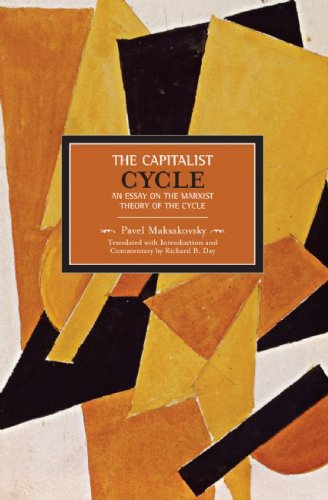My first post, “Forcing is the midwife…” expressed my discombobulation at the swerves already distracting me from my main project here – to ensure Maksakovsky’s theory of the capitalist cycle does not get lost again. Homotopy type theory just wasn’t somewhere I was expecting dialectics to take me until I started following up from nLab on Hegel’s “Science of Logic”.
It will be quite a while before I can explain the various connections here, even just enough to clear them out of my head so I can get down to work on Maksakovsky.
Meanwhile this is to place on record that I became aware that a swerve towards continuum mechanics, and particularly “rheology”, was inevitable before I found out the origins of the name “rheology”.
That name comes from the ancient Greek for flow made famous in Heraclitus “panta rhei” – “everything flows”. No doubt I would have found that irresistable if I had known. But I did not know – I very recently found out after looking up rheology for other reasons.
In fact I did not even understand any implications at all from the fact that homotopy studied invariants under equivalences between continuous deformations of closed continuous paths. I had picked up the definition in terms of maps from the real interval [0,1] from a general Topology text when I did an undergraduate maths degree half a century ago. But I recall consciously deciding to stick to minimal point set topology (including nets and filters) but ignoring homotopy theory as anything involving the real line was bound to involve some of the “analysis” I was studiously avoiding as especially uglified “applied maths”.
I only recently came to the conclusion that my dialectical swerves would necessarily involve some study of continuum mechanics. This was partly directly from an analogy between the “fixed capital” central to Maksakovsky’s explanation of how Marx’s reproduction schemes actually work dynamically, and the “plasticity” of visco-elastic materials like putty. Partly from a very long standing interest in taking Walter Noll’s “Finite Dimensional Spaces” [FDS] as a text book for getting back into mathematics generally and partly from following up on category theory which I knew must be central to dialectical mathematics.
I had wondered why aspects of Walter Noll struck a chord with me that was also struck by category theory, although I saw no direct mention of any such connection. I did know Bill Lawvere was into materialist dialectics and also knew that Grassman’s Geometric Algebra was the right way to get into “applied maths” and that “infinitesimals” must be central to any tolerable study of “analysis”.
So I had already included “Conceptual Mathematics” [CM] and “New Foundations” [NF] as key texts for study along with [FDS] and also intended to follow up [CM] with Bell’s “Primer on Infinitesimal Analysis” [PIA] as well as the other follow on undergraduate level texts mentioned in [CM]. (Again partly based on picking up that “forcing” in “Boolean Valued Models” [BVM] of set theory, which I had previously thought would be a good starting point for infinitesimals in relation to mathematical economics and bounded complete linear spaces (Kantorovich), was now generalised to “topos theory”). I had also included “Variational Analysis” [VA] as a target text for value theory in mathematical economics and “Random Variation” [RV] for the stochastics needed in studying finance (with deep connections to path integrals in quantum mechanics).
But I only recently understood the deep connections with continuum mechanics and that Lawvere, like Noll, had been originally motivated by the need to find an adequate mathematics in which to express the theory of rational continuum mechanics.
I have only just got to “confluence” in Chapter 1 of “Practical Foundations for Mathematics” [PFM] and “Practical Foundations of Programming Languages” [PFPL]. Both of these are needed before I can hope to get anywhere with “Homotopy Type Theory” [HoTT], let alone the more general “modal” version used in nLab for “Science of Logic”.
My first post was assigned the tag “Level hallucination”. I was hoping to start ascending levels through “hypothesis” and “conjecture” to “theory” soon.
But when I found myself learning about “confluence” in type theory, I had to immediately post this under the same tag, “hallucination”.

“Putty/Clay” models are useful for understanding circulating capital, output as malleable putty or “leets” from the production of means of production and installation as an input of rigid baked “clay” instruments of production or “plant” as fixed capital of various different physical forms, historical and reproduction costs, vintages, productivity, physical and virtual depreciation for both production of putty “leets” and clay “durables” in both the production of means of production and the production of consumer goods.
Fracturing of rigid clay is studied in continuum mechanics and fracturing of malleable visco-elastic putty more specifically in rheology. Fracturing regularly occurs in capitalist crises. Such forms of diremption or “forcing” the ripping apart or tearing asunder of things is characteristic of dialectical “one divides into two”, especially with antagonistic contradictions.
Both concepts can also be extended to include “services” just as electric power is treated as “goods” in international trade statistics.
LikeLike